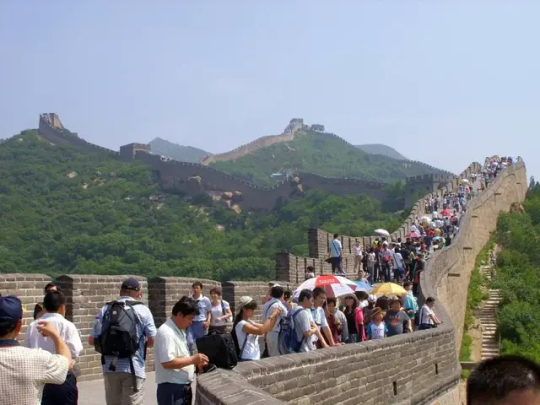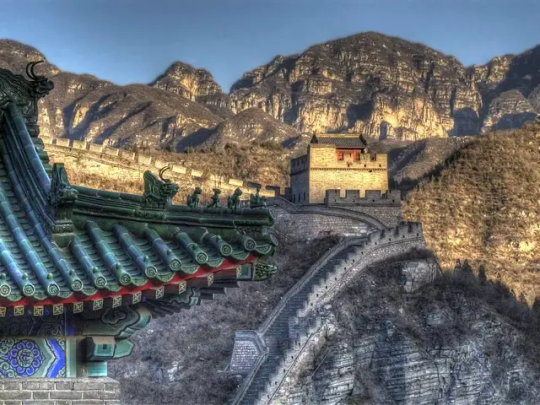#Whenwasthegreatwallofchinabuilt
Explore tagged Tumblr posts
Text
How Long is the Great Wall of China ? Built, Facts About😮👍

How Long is the Great Wall of China?
The Great Wall of China is an extensive bulwark that stands as one of the largest building-construction projects in ancient China. Spanning over two millennia, this monumental structure consists of numerous walls, many of which run parallel to each other, covering the northern regions of China and southern Mongolia. The most well-preserved section, dating back to the Ming dynasty (1368–1644), stretches approximately 5,500 miles (8,850 km) from Mount Hu near Dandong in southeastern Liaoning province to Jiayu Pass west of Jiuquan in northwestern Gansu province.

The Great Wall of China Map:
The Great Wall's winding journey often follows the crestlines of hills and mountains as it snakes across the Chinese countryside. Approximately one-fourth of its length is composed of natural barriers such as rivers and mountain ridges, while the remaining 70 percent is constructed wall, with some stretches featuring ditches or moats. Despite sections in ruins or disappeared, the Great Wall remains a remarkable structure and has been recognized as a UNESCO World Heritage site since 1987. Google maps here
Why Was the Great Wall of China Built?
The origins of the Great Wall can be traced back to the 7th century BCE, with various Chinese kingdoms constructing disparate border fortifications and castles. Initially, these defensive structures were established not only to counter the threat of barbarian invasions but also to protect against neighboring kingdoms. The Qin state, under Emperor Shihuangdi, connected existing walls in the 3rd century BCE, creating a unified defensive system. The purpose evolved over centuries, serving both defensive and administrative functions.

When Was the Great Wall of China Built?
Construction of the Great Wall can be traced back to the 7th century BCE when the state of Chu initiated the building of a permanent defensive system known as the "Square Wall." However, significant unification and expansion occurred during the Qin dynasty (221 BCE) under Emperor Shihuangdi, who linked existing segments into the "10,000-Li Long Wall." Subsequent dynasties, such as the Han, Bei Wei, and Ming, continually reinforced and extended the wall to defend against various threats.
Great Wall of China Huanghuacheng:
During the Bei (Northern) Wei dynasty (386–534/535 CE), the Great Wall was repaired and extended, specifically at Huanghuacheng, to defend against the Juan-juan and Khitan tribes in the north.

Who Built the Great Wall of China?
The construction of the Great Wall involved various Chinese dynasties and rulers. Emperor Shihuangdi of the Qin dynasty played a pivotal role in connecting existing walls to form a unified defense system. Subsequent dynasties, including the Han, Bei Qi, and Ming, contributed to the continuous construction and maintenance of the wall.
Where is the Great Wall of China?
The Great Wall stretches across northern China and southern Mongolia. It runs from Mount Hu near Dandong, southeastern Liaoning province, to Jiayu Pass west of Jiuquan, northwestern Gansu province. The wall often follows the natural topography, tracing hills, mountains, rivers, and ridges.

Facts About the Great Wall of China:
- The Great Wall was designated a UNESCO World Heritage site in 1987. - The construction of the wall spanned over two millennia, with significant contributions from multiple Chinese dynasties. - The wall served not only as a defensive structure against invasions but also played a role in centralizing control of trade and travel. - Signal towers, passes, and walls were integral components of the Great Wall's defensive system. - The majority of the existing Great Wall is attributed to the Ming dynasty, particularly during the reign of the Hongzhi emperor (1487–1505).

In summary, the Great Wall of China stands as a testament to the historical and architectural prowess of ancient China, representing both a formidable defensive barrier and a symbol of unity and strength. You can find encyclopedic information about the Great Wall Of China here. If you have any doubts about the information contained herein, please let us know. Read the full article
#FactsAbout#GreatwallofChina#TheGreatWall#Whenwasthegreatwallofchinabuilt#Whobuiltthegreatwallofchina
0 notes